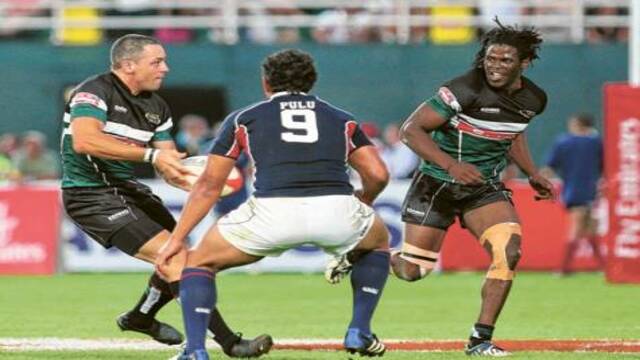Part 1
After reading Murray Kinsella’s fine article outlining his philosophical belief that rugby is a game of executing the simple things well (a position I strongly adhere to), it got the RR thinking about a worrying recent trend in rugby, observable from age-grade rugby all the way to first tier international rugby. It is the inability to commit defenders when on attack. Indeed, the old adage that attacking rugby starts with a “draw and pass” is seemingly no longer the ubiquitous cornerstone of attacking strategy it once was.
Murray was right to say that rugby is “partly about exploiting space on the pitch” and so I in-turn want to talk about the art of committing defenders in order to create space for supporting players. It is Rugby 101 of attacking play that committing defenders is the easiest, and arguably the most effective, way of creating an overlap.
Quite simply, if you have a numerical advantage in an area of the pitch, you should be able to exploit the mismatch and profit from it, whether by making important territorial gains or scoring a try. Overlaps are the fuel that great attacking teams feed off! Overlaps have produced some of the greatest tries ever seen on a rugby pitch. I recommend revisiting Gareth Edwards’ try vs the All Blacks in 1973 and Jean-Luc Sadourney’s in 1994. Both exhibited teams exploited, or perhaps more aptly created, overlaps through having their players (both forwards and backs) commit defenders and profit from the space created.
Practical implementation
Committing defenders, whether utilised as part of a set move or a reaction to a developing situation, is quite simply the most effective way to attack and is easy to train and implement in backline strategy. Whether two vs one, three vs two, three vs one, four vs three, four vs two – whatever ratio desired by the coach – set up a simple training exercise whereby a group of attackers (with the ball obviously) have to try and get the ball from one end of a coned box to the other against a group of defenders.
Such basic exercises, when consistently trained, work to instil an ethos of ‘committing defenders’ in the whole team, not just individuals or backs. This is a key point as attacking rugby is most effective when it is conducted as a team. Carrying dead wood (players that offer nothing in attack) can be extremely detrimental to a team’s attacking potency.
Integrating forwards into attacking play is something the All Blacks have mastered for years. Two of the finest attackers in All Black history have been Zinzan Brooke and Kieran Read – players that added invaluable attacking nous from their forward positions.
Once a team masters the basic exercises and starts to instinctively execute it during games, add in more complex exercises to further develop a team’s ability to utilise space effectively in a number of different contexts.Progressively adding in scenario-based or set-piece orientated drills is a natural way of building on the foundations developed. Great attention should also be focused on encouraging the independence in players to choose the right time to commit defenders and draw and pass.
This is important because the draw and pass is not always the most advantageous option. Often taking the tackle, taking a kicking option or simply passing the ball quickly along the line are better options. It is a matter of opportunity, thus teaching rugby players about identifying the opportunities is the key challenge.
The player in possession needs to be assessing all the variables and making quick but informed decisions – where is the space, what is the defensive line, what is the corresponding defender doing, where is the full back, who is in support on attack and so on… At the international level it can get quite technical. For instance, for the All Blacks, ‘identifying the body shape of defenders’ is a key variable in deciding whether it is on to attack through drawing and passing.
As Murray rightly said, coaching the ‘vision’ side of things is a lot harder than coaching the practical art of passing and committing defenders. But it is something I believe can be coached and enhanced in players.Sure, turning a player with little to no innate vision into Aaron Cruden is an impossible task, but training players to be more discerning and aware on the rugby pitch is an important aspect of turning a team from a pack of individuals into an organism – 15 players working together on the same attacking page.This is something the All Blacks have mastered and, in part two of the article (to be published next week), the RR will break down some game tape of recent matches to illustrate how adept (and not so) international teams are at committing defenders and drawing and passing.
What do the coaches that use the ‘Rugby Site’ think? Do you put much focus on spatial awareness and drawing and passing in your training exercises? How much vision, if any, can you teach a player?


